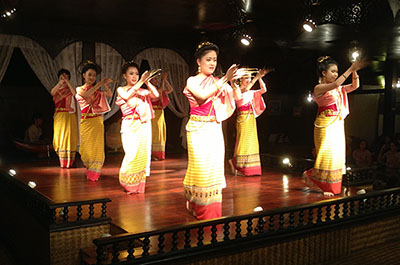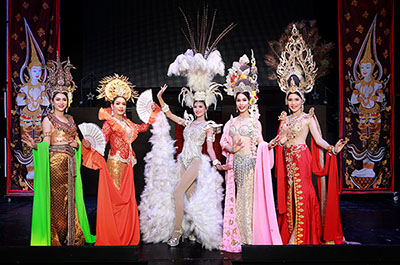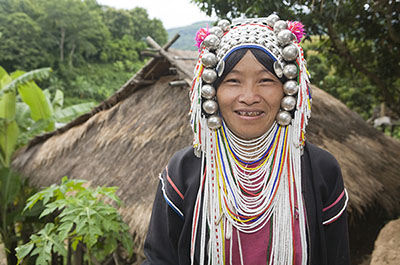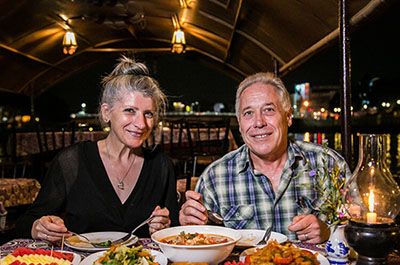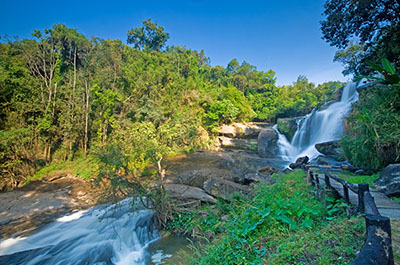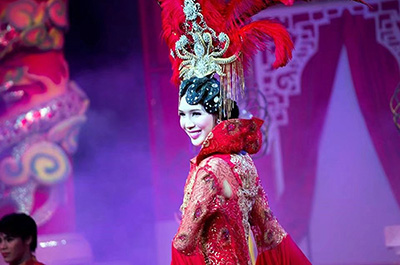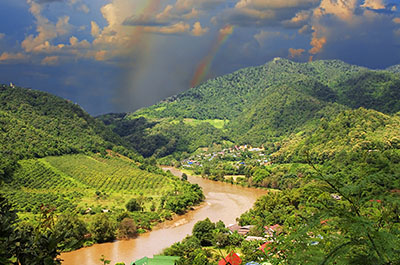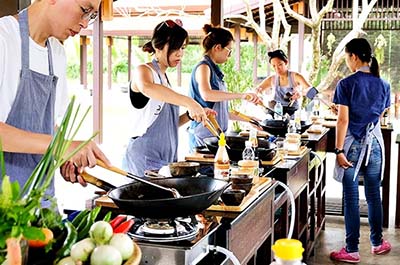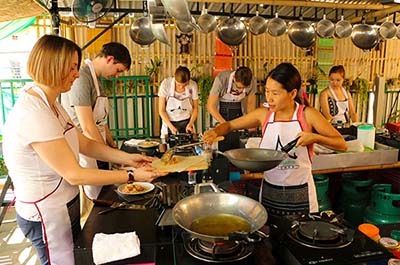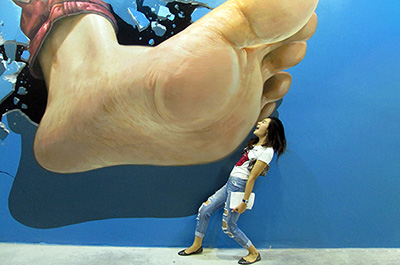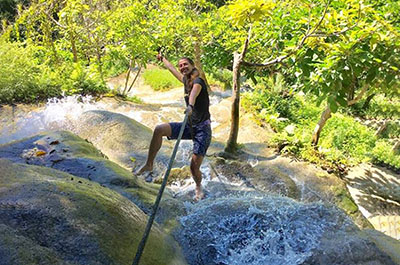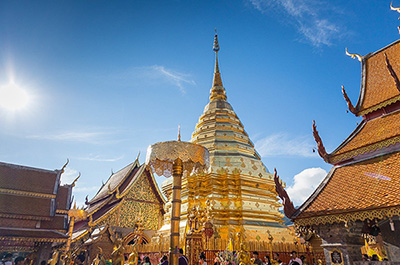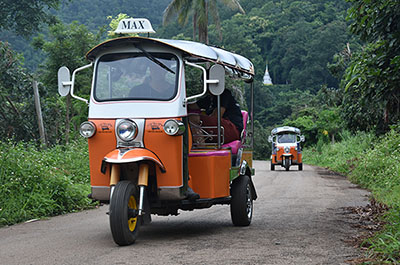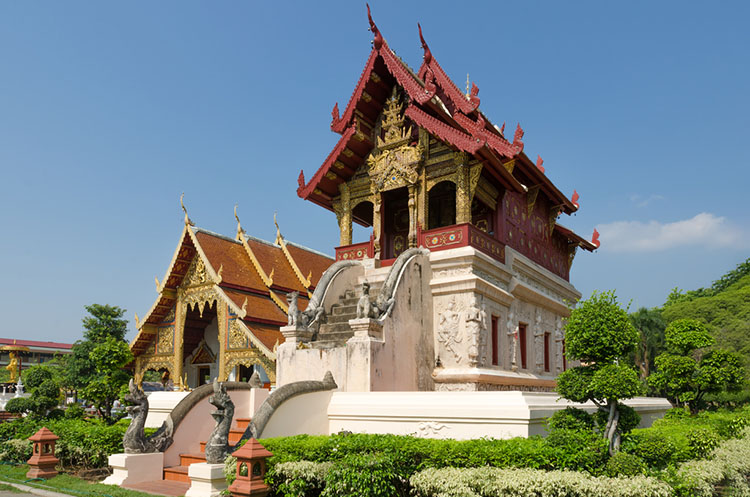
Temple Tour
Visit Chiang Mai’s most beautiful temples
During this tour you will visit some of the most famous temples of Chiang Mai. Among them are Wat Chiang Man, Wat Phra Singh, Wat Chedi Luang and Wat Suan Dok.
Wat Chiang Man Temple
The Wat Chiang Man (Wat is the Thai word for temple) was built in 1297 which makes this the oldest temple of Chiang Mai.
When King Mengrai founded Chiang Mai in 1296 to be the capital of the Lanna Kingdom he lived in a camp to oversee the construction of the city. It was here that the Wat Chiang Man was constructed.
The oldest structure in the temple complex is the Chedi Chang Lom, also called the Sacred Elephant Encircled Stupa. A hair relic of The Buddha is enshrined inside this white chedi, which is surrounded by 15 life-sized elephant statues.
There are two viharns (Buddhist monastery) on this temple complex, the largest of which houses the oldest Buddha statue of the Lanna Kingdom dating back to the year 1465.
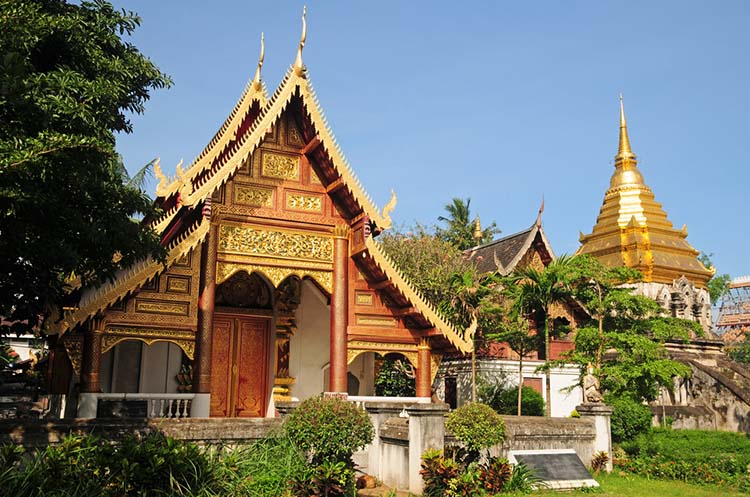
Phra Sila & Phra Sae Tang Khamani images
Inside the other smaller viharn two important and famous Buddha statues are kept.
The Phra Sila is a standing Buddha image carved out in stone said to be originating from Sri Lanka about 1,200 years ago. This image is believed to hold the power of bringing rain and it therefore plays an important part during the Songkran festival, the traditional celebration of Thai new year in April. During this festival the streets everywhere in Thailand are crowded with people throwing water at each other or shooting from water guns.
The Phra Sae Tang Khamani or Crystal Buddha is a small Buddha image carved out of quartz crystal. It is not known how old exactly this statue is, but it is believed to protect against disasters.
Wat Phra Singh Temple
The second temple is the Wat Phra Singh, also known as the Monastery of the lion. This temple is one of the highlights of Lanna architecture in Northern Thailand. It was built in mid 14th century during the reign of King Pa Yo to enshrine the ashes of his father, King Kham Yu.
The name of the temple is derived from the Thai word “singh”, meaning lion. The temple got its name when the Phra Singh Buddha was brought here in 1367. The origin of this image is not known, but it likely comes from India or Sri Lanka.
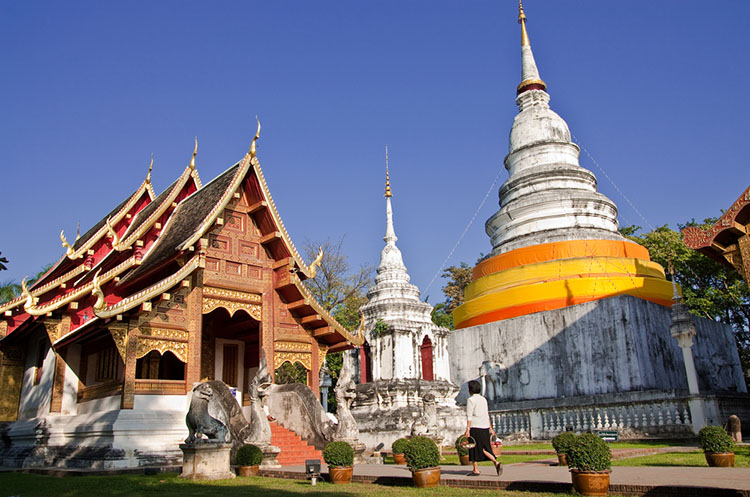
Two fine examples of Lanna architecture can be found here, namely the Ho Trai and the Viharn Lai Kham. The Ho Trai built in 1477 contains the library of the temple. The lower part of the structure is a brick stuccoed base, decorated with finely carved dancing figures. The upper wooden part is covered with gilded lacquer, mosaics and carvings.
The second magnificent example of classical Lanna architecture is the Viharn Lai Kham which holds the Phra Singh Buddha. This traditional teak wooden building was built in 1345 and is richly decorated with a gilded lacquer facade, from which it derives its name - Lai Kham means gold patterning. The beautiful mural paintings inside date from around 1820 and show scenes of daily life in the Lanna Kingdom as well as fables from the Jataka tales, which are a great number of stories about previous incarnations of the Buddha.
Wat Chedi Luang Temple
The third temple is the Wat Chedi Luang. The Phra Chedi Luang originates from the end of the 14th century when it was built to a height of around 24 meters. After years of expansions, in 1475 the structure reached a height of more than 80 meters which made it the tallest structure of Chiang Mai which it remained for centuries.
The present day structure is still impressive but much lower - a large earthquake in 1545 partly destroyed the chedi and took off some 30 meters. The Wat Chedi Luang also houses the city pillar, the Sao Inthakin, which people believe guards the city from misfortune.
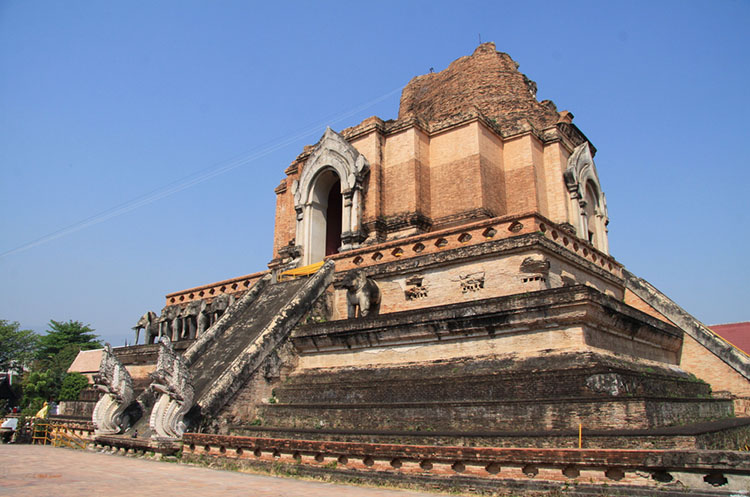
Wat Suan Dok
The Wat Suan Dok or “flower garden temple” is located just outside the old walled city. The temple is known for its large number of chedis.
The Wat Suan Dok was built in the 14th century to enshrine a Buddha relic. The relic, believed to be a shoulder bone of the Buddha, is enshrined in a 48 meter tall, golden chedi in Sri Lankan style.
The temple’s ordination hall enshrines an almost five meter tall bronze Buddha image cast in 1504.
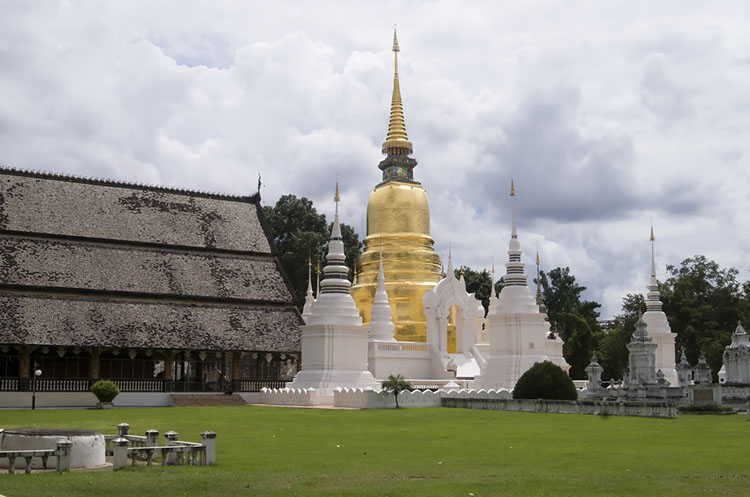
Other Chiang Mai attractions:
Attractions in Chiang Mai
Best attractions Chiang Mai
- Miracle Cabaret
- Hill Tribes Tour
- Art in Paradise
- Khantoke Dinner & Dance
- Night Safari
- Flight of the Gibbon
- Doi Inthanon National Park
- Sticky Waterfalls
- Grandma’s Home Cooking School
- Mae Ping River Dinner Cruise
- Siam Dragon Show
- Thai Akha Cooking School
- Tuk Tuk Club
- Chiang Mai Zoo Aquarium
- White Water Rafting
- Bo Sang Handicrafts Village
- Muay Thai Boxing
- Temple Tour
- Golden Triangle
- Doi Suthep Temple
- Chiang Mai’s Temples
